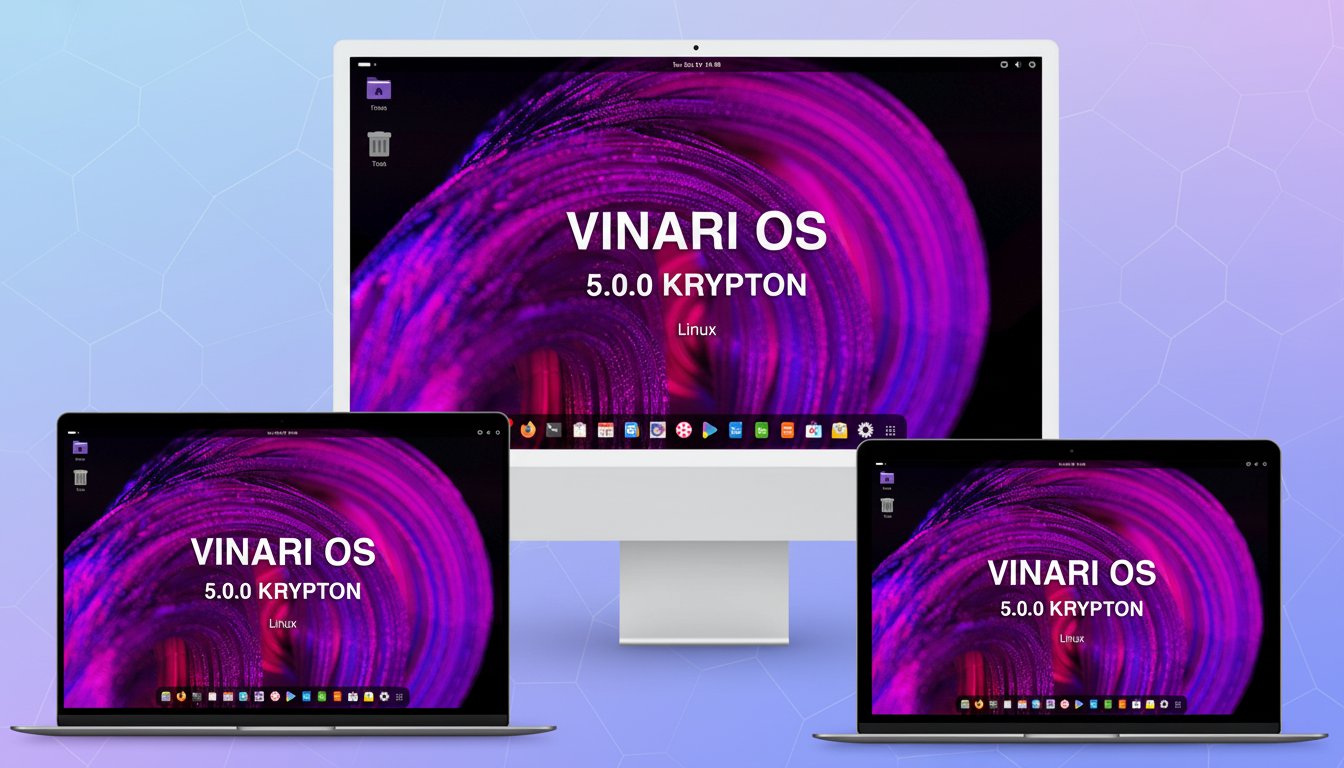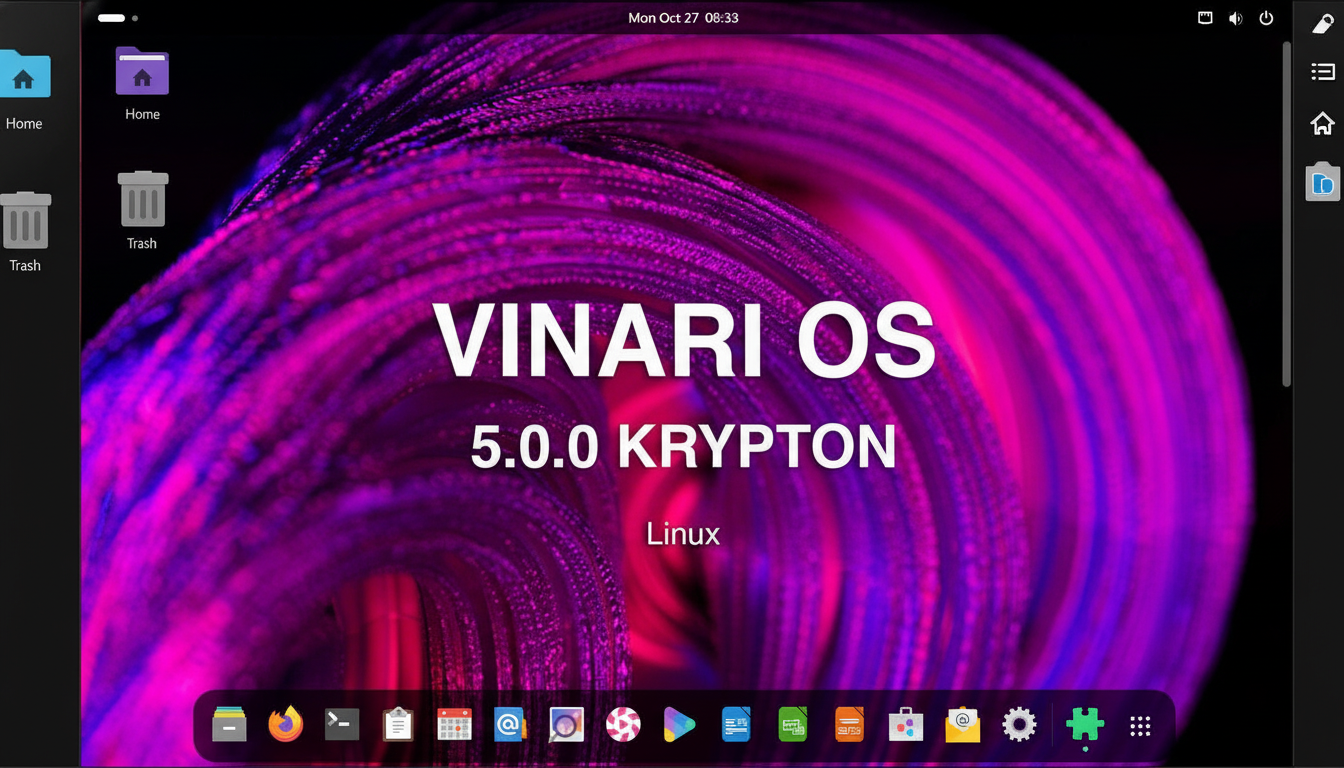Every now and then, a new Linux distro surfaces that’s somewhere between unpleasant and intriguing in its approach to computing. Vinari OS is one of those finds — it’s a Debian-based distro intended to look and feel modern while running well on hardware that should have died years ago. Based on Debian 13 Trixie and included as part of the 5.0.0 Krypton release, it provides you with a polished GNOME experience without that performance-killing overhead many old machines need to leave behind in order to stop being slowpokes.
Why This Distro Seems Fast On Old Hardware
Vinari OS does just that, cutting out the bloatware and fine-tuning what counts. It comes with GNOME; just the good, responsive bits:
- Why This Distro Seems Fast On Old Hardware
- Thoughtful Defaults Without Unnecessary Bloat For Daily Use
- Improving The Tweak Workflow For Everyday Users
- Hands-On Performance Results On Older Laptops Tested
- How It Stacks Up Against Popular Linux Favorites
- Longevity Promises And Peace Of Mind Through 2030
- Who Should Install Vinari OS On Older Hardware

- Dash to Dock for instant access to applications
- Caffeine to prevent sleep during long tasks
- GSConnect to link up your phone
- Coverflow Alt-Tab for fast window switching
The effect has a purpose rather than flashy flash, and that’s just the kind of thing aging hardware requires.
The developers note an idling memory footprint of around 1.07 GiB, which is roughly what you’d expect from a lightweight GNOME arrangement without heavy background services.
For comparison, community benchmarks and reviews generally place stock GNOME environments on popular distros around 1.5 – 2.0 GiB at idle based on services and extensions. It matters on 4 GB systems where every MB is precious.
Thoughtful Defaults Without Unnecessary Bloat For Daily Use
Vinari OS is ready for work without overwhelming you with extras. Out of the box you get:
- Firefox
- LibreOffice
- Geary
- BleachBit
- Gnote
- Secrets (for KeePass-compatible vaults)
- Lollipop for music
- GNOME’s Videos app
Flatpak and AppImage support is included out of the box, allowing you to expand with modern apps from popular repositories while keeping the base lean — groundwork that both the GNOME Foundation and the wider Flatpak ecosystem have promoted for predictable updates and sandboxing.
Improving The Tweak Workflow For Everyday Users
First-time Linux users can find customisation overwhelming. VinariOS Tweaks changes that with a clean tabbed interface:
- Style & Colours
- Dock & Desktop
- Fonts & Windows
- Misc. Settings
Every tab appears to the user as a block of human operator switches, not an impenetrable machine tree. If you feel you went too far, one-click reset in Misc. Settings reverts to the default desktop — a clever safety net for people trying GNOME out for the first time.
Hands-On Performance Results On Older Laptops Tested
In hands-on testing on decade-old ThinkPads based on dual-core Intel CPUs and 4 GB of RAM, Vinari OS felt snappy where heavier desktops groan to a halt. Cold-boot-to-ready on SATA SSDs clocked at ~half a minute, while at idle they sipped around 1.1 GiB according to GNOME System Monitor. LibreOffice loaded in a second, Firefox coped with a few tabs open without swapping, and 1080p video playback was fine once codecs were installed.

Even in a limited virtual environment (2 cores and 3 GB RAM), the desktop was responsive, which also mirrors what many power users experience when contrasting Debian-based spins to bloated, service-laden builds. Phoronix’s longstanding performance coverage, in fact, has demonstrated time and again that what the distribution defaults to doing on your behalf in the background is as much a factor for perceived speed (and certainly first impressions) as raw kernel version number or desktop environment flavor — and Vinari OS goes all-in on that lesson.
How It Stacks Up Against Popular Linux Favorites
When compared to Ubuntu’s GNOME flavor (which has its share of unpopular default behaviors), Vinari OS feels more conservative and less opinionated initially without sacrificing a modern look found everywhere but ultra-light desktops.
Against Linux Mint, it gives you a cleaner GNOME experience without wading into Cinnamon’s heavier footprint on some machines; and while Xfce- or LXQt-centric distros like Xubuntu or Lubuntu will always win lowest footprint, Vinari OS has a “full desktop” feel that belies its tiny size.
It is also grounded in the Debian Project’s packaging principles, which put a premium on stability and predictability. That means less for users reviving old PCs to be surprised about — particularly when you factor in apps delivered by Flatpak that separate software patches from system upgrades to give a consistent bake of updates.
Longevity Promises And Peace Of Mind Through 2030
Vinari OS 5.0.0 is pegged for support until 2030, making it a great life partner for that repurposed laptop or one of those hand-me-down desktops, for use at the office ¯\_(ツ)_/¯
Where Trixie is a testing branch for Debian, Vinari uses just-in-time packages and a selective list of desktop applications to make updates seem routine rather than risky. For households or schools transforming Windows 10-era machines into daily drivers, that longevity is a big deal.
Who Should Install Vinari OS On Older Hardware
If you’re stepping down off a Windows machine long abandoned by Microsoft or you’re reviving an old 2010s laptop with 3–4 GB of RAM, Vinari OS lands right in the pocket between modern and familiar that provides enough speed to fool yourself into thinking your device has many more years left to give. The defaults are fostered with beginners in mind, but the Tweaks tool and GNOME extensions provide enough space for enthusiasts to customize without breaking things.
Bottom line: This no-name distro barely registers a blip on anyone’s radar — but it’ll revitalize old PCs. For those who prefer performance ahead of the gimmickry, Vinari OS stands out and shows you don’t need to have a lightweight desktop for it to look intense.

